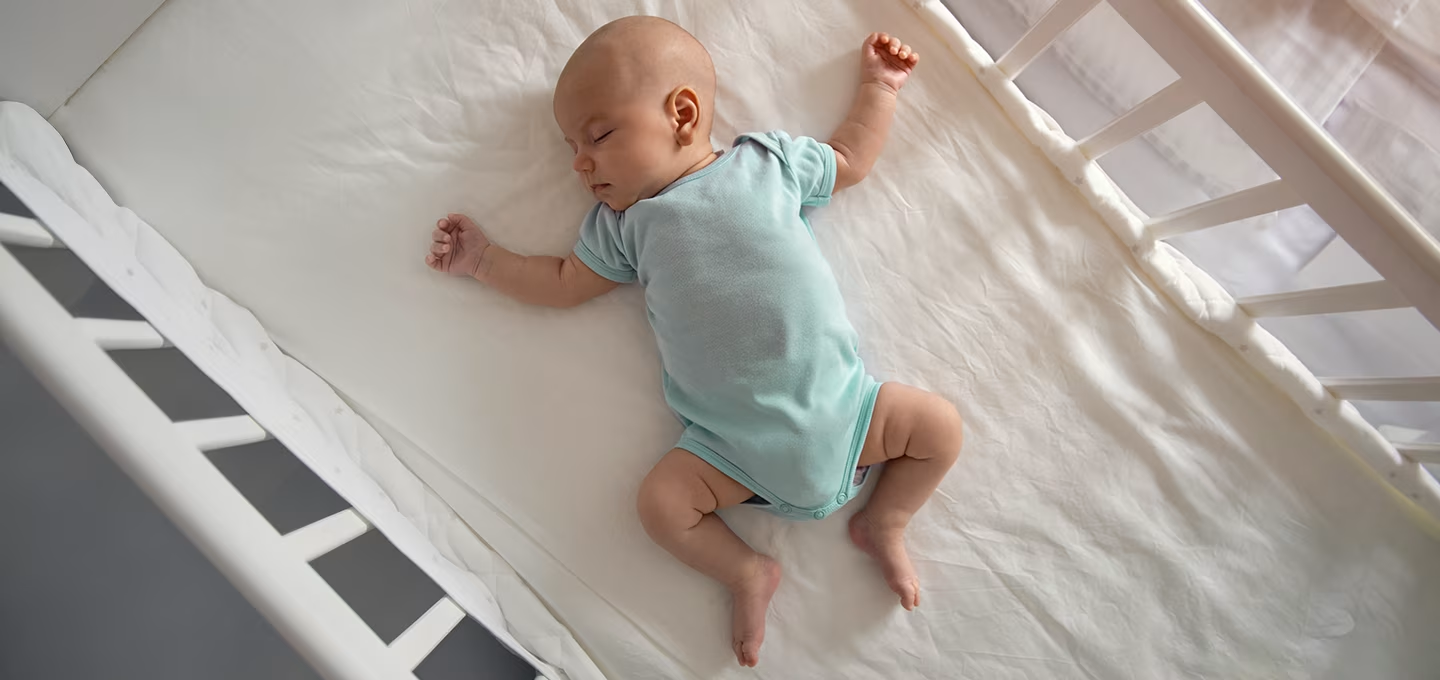
When Is Side-Sleeping Safe for Your Baby?


Key Takeaways for better baby sleep
Short answer: It is best and safest for babies to sleep on their backs for bedtime and naptimes. Side or stomach sleeping can lead to injury, SIDS, or suffocation. All babies should be put on their backs for bedtime and naps.
If your baby is less than 1-year-old and rolls over onto their side or stomach at night, reposition them onto their back.
If your baby is older than 1-year-old and rolls onto their side or stomach at night, you can leave them like that but should still put them down for bed and naps on their backs.
To stay ahead on sleep safety and everything else related to baby sleep, download the Smart Sleep Coach by Pampers™ app. It's jam packed with expert guided classes, videos and articles, as well as tools to help easily solve your baby's sleep challenges.
Got sleep questions? Take this FREE Sleep Assessment!
Side-sleeping might be common for adults, but is it safe for newborns or older babies to sleep on their side? Find out at what age babies can sleep on their side, and why the back-sleeping position is recommended to reduce the risk of sudden infant death syndrome (SIDS).
Is It OK for Babies to Be Put to Sleep on Their Sides?
Babies younger than 12 months shouldn't be put to sleep on their sides. Experts used to think side-sleeping was OK for newborns and infants, but evidence has shown that this position isn't as safe as back-sleeping.
This is because sleeping on the side can increase the risk of SIDS, especially in the first six months.
Why Shouldn’t Babies Sleep on Their Sides?
If you notice your baby sleeping on their side, they can easily end up rolling onto their stomach, a sleeping position that can block the airways and impair your baby’s breathing.
Sleeping on the stomach may also increase the chance of your baby “rebreathing” the air they have already expelled, leading to a decline in oxygen levels and an increase in carbon dioxide. This can result in your baby not being able to wake themselves up.
Until your baby turns 1, be sure to place them to sleep on their back for every sleep, including naps.
What if Your Baby Rolls on Their Side During Sleep?
If you notice your baby sleeping on their side, gently roll them onto their back. Keep doing this during the first year until your little one is able to roll over both ways by themselves. Discover more about when babies typically start rolling over by themselves. With Pampers Swaddlers, you don't need to worry about leaks as your baby is rolling over. With a BreatheFree Liner™ and Dual Leak-Guard Barriers, Pampers Swaddlers wick away wetness and protect around the leg cuff where leaks happen most.
How to Prevent Side-Sleeping in the First 12 Months
There's no way to prevent your baby from rolling onto their side or stomach during sleep, but you can always make sure to put them down to sleep on their back.
If they happen to roll onto their side or stomach, gently return them to their back. Keep doing this during the first year until you're confident your baby can roll themselves over both ways without any trouble.
Reducing the Risk of SIDS
There's more you can do to reduce the risk of SIDS:
When Can Babies Sleep on Their Sides?
After the age of 1, babies can sleep on their side.
However, it's important to always place your baby in their crib on their back on a firm mattress that's covered with a fitted sheet.
In the first year, the crib shouldn't contain any loose bedding, bumper pads, blankets, pillows, or stuffed animals. It should be completely empty.
The Bottom Line
During the first year of your little one's life, always place them on their back for every sleep. Back-sleeping is the safest sleeping position for your baby. Side-sleeping can increase the risk of SIDS, so newborn or older baby side sleeping isn't recommended.
If your baby happens to roll onto their side or stomach during sleep and is under 1 year old, gently return them to the back position. Keep doing this until your baby can comfortably roll over in both directions themselves.
To stay ahead on sleep safety and everything else related to your baby’s sleep, download the Smart Sleep Coach app by Pampers. It's jam-packed with expert-guided classes, videos, and articles, as well as tools to help solve your baby's sleep challenges. To start, take this free sleep assessment and get personalized insights into your baby's sleep patterns.
